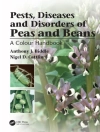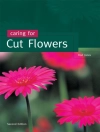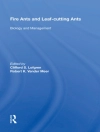This book is a guide to achieving optimal crop yield while ensuring the sustainable and efficient use of water resources. It delves into critical topics such as irrigation water management, global and regional climate variability and change, food security, water pollution, soil erosion, and fertility loss.
With the growing stress on water resources, the emphasis needs to be on environmentally friendly alternatives, including cutting-edge solutions like AI-based approaches, sensor-driven automation systems, and the integration of Io T in irrigation automation. This book collates information and analyzes current challenges in agriculture but also proposes innovative solutions, particularly in the context of the interconnected factors of water, crops, and climate change. By offering insights and strategies, it aims to guide the development of a water-wise, sustainable agriculture system that ensures the safety and well-being of future generations. This book is a valuable resource for anyone involved in agriculture and related fields, providing knowledge and tools to create a resilient and efficient food system.
The target audience is diverse, ranging from farmers and students to researchers, scientists, irrigation practitioners, decision-makers, professors, and policymakers.
Cuprins
Chapter 1. Sustainable Developmental Goal 17 and Agriculture From an Indian Perspective.- Chapter 2. Influence of Climate Change Scenario on the Existing Water Resources and its Mitigation Strategies.- Chapter 3. Traditional Agronomic Practices: Understanding and Mitigating the Risks of Climate Change.- Chapter 4. Internet of Things (IOT): A Technology for Smart Irrigation and Monitoring.- Chapter 5. Drip Irrigation: Concept, Design and IOT Based Automation.- Chapter 6. Moisture Sensor Based Irrigation Scheduling to Improve Water Productivity in Agriculture.- Chapter 7. Smart Green Housing: Vertical Farming.- Chapter 8. Nano-Technology Mediated Agriculture Water Management.- Chapter 9. Estimation of Seasonal Crop Water Demands for the Command Area of Eastern Sone High Level Canal (ESHLC) Irrigation Project, Bihar using Mapping Evapotranspiration at High Resolution with Internalized Calibration (METRIC) Model.- Chapter 10. Estimating Chlorophyll-a Concentration in Water Bodies of Coimbatore, Tamil Nadu using Geospatial Techniques.- Chapter 11. Impact of Land Use Land Cover Changes on the Environment and Society.- Chapter 12. Assessment and Development of Water Resources with Modern Technologies.- Chapter 13. Large Dams and Developmental Dilemma: Watershed Management and Sustainable Livelihood Practices in Rim Areas of Tehri dam, Uttarakhand, India.- Chapter 14. Canal Automation and Management System to Improve Water Use Efficiency.- Chapter 15. Phytochemicals as Potent Therapeutic Molecules in Cancer Treatment in Relation to Sustainable Agriculture System.- Chapter 16. Plant Physiological Responses to Climatic and Environmental Change: Especially to Rise in C02, Temperature and UV-B Radiation.- Chapter 17. Biochar: A Sustainable Way to Enhance Soil Fertility, Crop Yield and to Mitigate Global Warming.- Chapter 18. Nanobiosensors for Soil Remediation.
Despre autor
Dr. Yasheshwar,
Associate Professor, Botany Department, Acharya Narendra Dev College, Delhi University, Govindpuri, Kalkaji, New Delhi- 110092
Dr. Anil K. Mishra, Principal Scientist, Water Technology Centre (WTC), Indian Council of Agriculture Research (ICAR), Indian Agricultural Research Institute (IARI), New Delhi
Dr. Mukesh Kumar, Assistant Professor, School of Agriculture, Indira Gandhi National Open University, Maidangarhi, New Delhi












